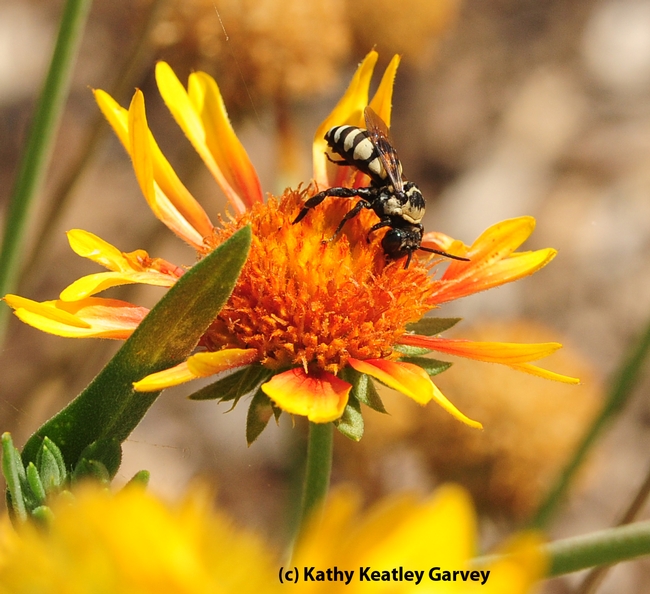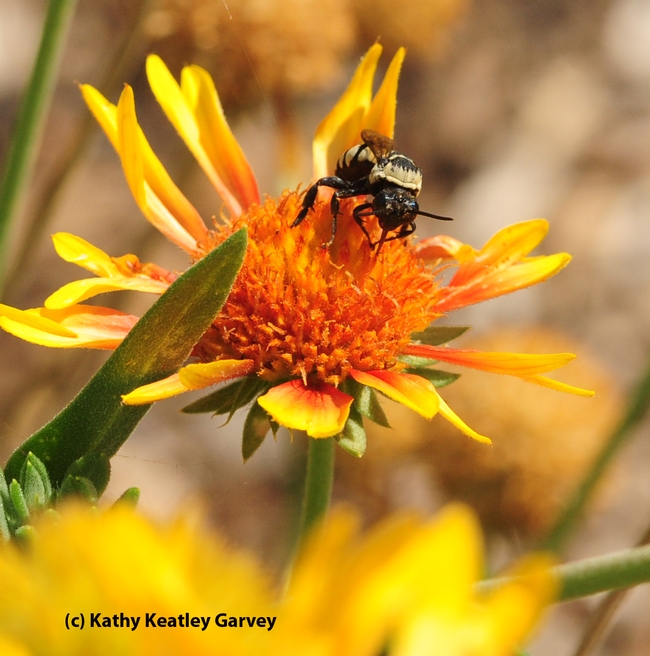When you visit the half-acre Häagen-Dazs Honey Bee Haven, a bee friendly garden on Bee Biology Road at the University of California, Davis, you might just see a cuckoo bee.
The cuckoo bee (see below) is a male Triepeolus concavus, as identified by native pollinator specialist Robbin Thorp, emeritus professor of entomology at UC Davis, who maintains an office in the adjacent Harry H. Laidlaw Jr. Honey Bee Research Facility.
Thorp has been monitoring the garden not only since it was planted--in the fall of 2009--but BEFORE it was planted, to collect the baseline data. To date, he's detected more than 80 species of bees, "and counting."
The cuckoo bee, nectaring on a blanket flower (Gaillardia), is just one of the species he's found in the garden.
The female cuckoo bee lays her eggs in the ground nests of other bees, including the sunflower bee, Svastra. Cuckoo bees are kleptoparasites, meaning that they steal the food stores provisioned by the host bee. Cuckoos lack pollen-collecting structures (scopa). So when the cuckoo bee eggs hatch, the larva will consume the pollen ball collected by the hosts, and kill and eat the host larvae.
Like human kleptomanias, they've found a way to make it in this world at the expense of others.
Thorp annually teaches at The Bee Course, described as a "workshop offered for conservation biologists, pollination ecologists and other biologists who want to gain greater knowledge of the systematics and biology of bees," and held at the Southwestern Research Station, Portal, Ariz. This year's dates are Aug. 25 to Sept. 4. The workshop attracts people from all over the world, including dozens from the UC system.
Attached Images:

